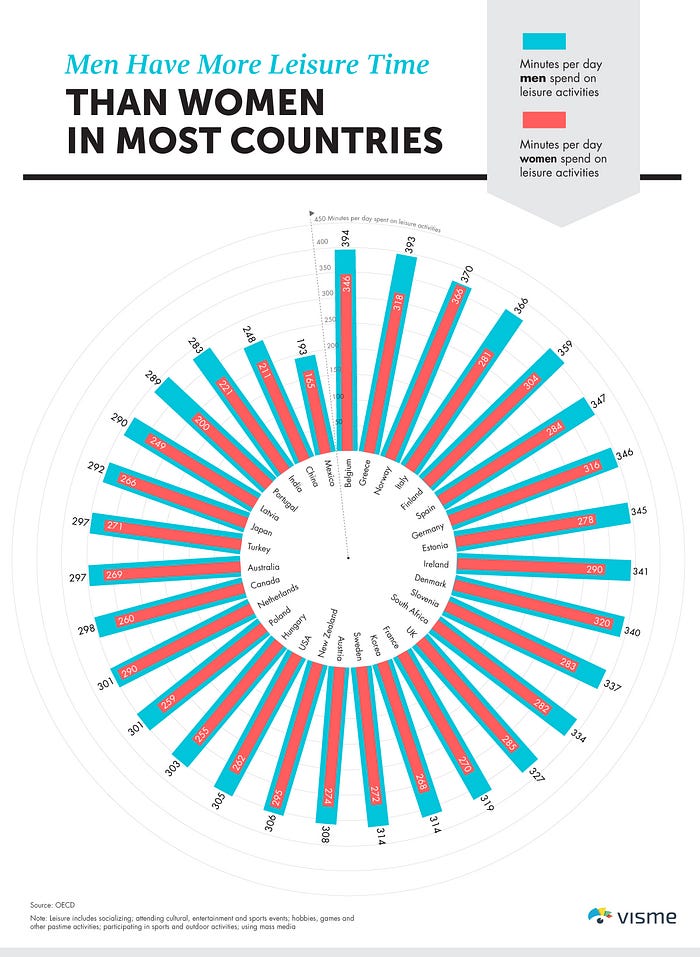Visualizing Women’s Unpaid Work Across the Globe (A Special Chart)

Imagine for a minute if women across the globe stopped doing all the domestic, unpaid labor they do day after day: the cooking, cleaning, child care, laundry, shopping, etc. The global economy would collapse and society would stop functioning.
Yet, despite report after report on the importance of reducing women’s “time poverty” across the globe, the burden of unpaid labor continues to fall disproportionately to women, especially in developing countries.
Even for women in higher income countries, “work” doesn’t stop once they get home from their day job — it just starts. In the US, for example, women still spend nearly an hour more on household activities than men.
In celebration of International Women’s Day and to honor the often-undervalued contributions of women across the globe, we created this eye-opening visualization on the differences between the time men and women spend on unpaid work across the world:

By comparing the relative area of each circle to the rest, you can clearly see that the countries with the highest inequality in unpaid work (defined by the OECD as routine housework, shopping, care for household members, volunteering and travel related to household activities) are India, Japan, Korea, Mexico, Turkey and Portugal.
Meanwhile, those with the highest equality are Scandinavian countries such as Sweden, Norway, Finland and Denmark. Behind these countries are those with slightly higher gaps, such as Canada, United States, Germany, United Kingdom, Belgium and France.
It is worth contrasting this with OECD’s leisure time statistics, which reveal that women still work more and play less in all OECD countries, as visualized in the circular bar chart below:

Here, it is evident that the countries with the greatest disparity in leisure time enjoyed by men and women are Portugal, Greece and Italy, while those with the smallest gap are Norway, Denmark, Netherlands and New Zealand.
What is your interpretation of the above data visualizations on unpaid work and leisure time in OECD countries? Do you agree with global development experts that unpaid work should be more equally distributed to allow for the economic and social progress of women across the world? Let us know your thoughts below.
The original version of this post first appeared on Visme’s Visual Learning Center.


![Is the Difference in Work Hours the Real Reason for the Gender Wage Gap? [Interactive Infographic]](https://miro.medium.com/v2/resize:fit:679/0*utqGbmHQYS9VVqpt.gif)

![How to Use Pastel Colors in Your Designs [+15 Wonderful Pastel Color Schemes]](https://miro.medium.com/v2/resize:fit:679/1*EjFTCqK1d8cxOZHYOK76eQ.jpeg)





